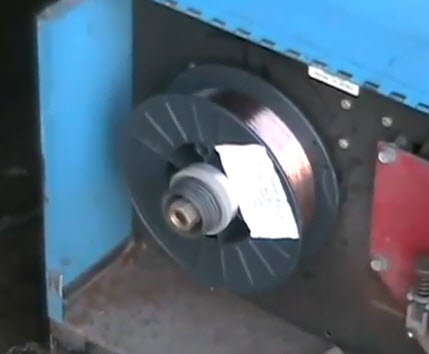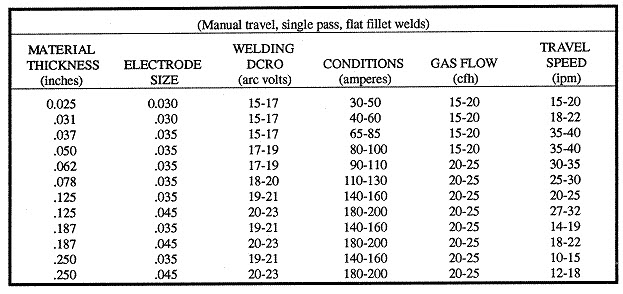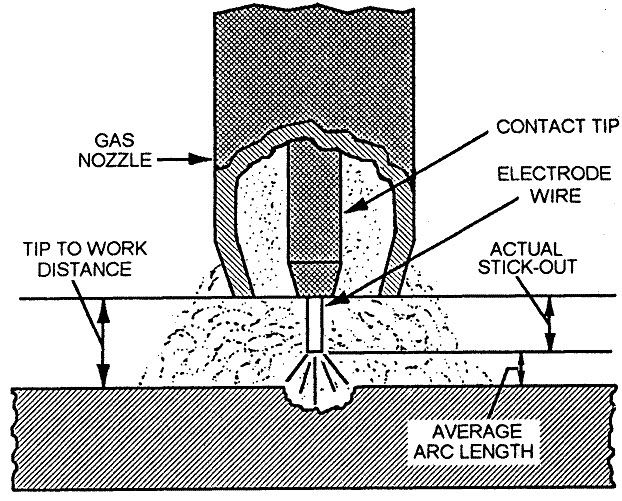Beginners MIG Wire Tutorial!
MIG wire is a filler wire used in a MIG welding machine.
You need filler wire to weld with because that is what is used to fuse the joint you are welding together.
MIG welding wire is has to be the same type of metal as the base metal you are welding (base metal is the piece you are welding to another piece).
For example if you are welding mild steel you will need MIG wire that is mild steel. If you are welding aluminum you need aluminum mig welding wire.
Although it's not totally crucial you should really use MIG filler wire that is composed of the same material as the base metal.
For example, if you are going to weld aluminum Type 308 it is a very good idea to use ER308 aluminum mig welding wire.
You buy filler wire on spools, and they come in varying sizes measured in diameter. They range in size from .02" to .125" (1/8").
Click Image For A Larger View.
Why Are There Different Wire Diameters?
You will be welding material in different thicknesses and there is a certain wire diameter you'll need to be able to weld that metal thickness.
If the wire is to thin for the material thickness it will be difficult to weld.
For example one project I am working on has a thickness of .25 so the wire size I will need is .045.
See the chart below. The wire size is the column the reads 'Electrode Size'. The MIG wire is also called an electrode.
If
you are welding thinner metal you can stick with .020, .030, and .035
wire sizes. In addition you can also use these wire sizes to weld low
carbon steel, medium carbon steel, and low alloy high strength steel
with a medium thickness (see chart below).
However, material that is considered to by Medium thickness requires MIG wire that is .045" 1/16" in diameter. And if you are welding thicker material than that you will probably need even thicker wire.
Material thickness is not the only factor in determining the mig wire size. Another thing to consider in your choice of filler wire is knowing what position you will be welding in. For example, if you are welding in the overhead position you will want to use thinner wire. Same goes with the vertical position.
Also, your filler wire has to be free of any dirt and contaminants like dirt and dust, grease or oil, and even fumes from the shop! It has to be clean. If it is not clean it will gum up or you will get bad welds. Some welders manually install a wiper with solvent in the wire feed mechanism.
When you get a new spool of wire and load it you'll see that some of you'll get good welds out of it because it's fresh from it's container. So store your wire in a dry warm environment and put it back into the container or carton you bought it in if it will be a long while between welding projects.
MIG Wire Stick Out:
Wire stick out is basically how far the mig welding wire 'sticks out' from from the welding gun nozzle tip.
Wire
stick out is crucial in MIG welding because it affects current from the
power source. Think about it this way; the more the wire sticks out the
less output you get (current output). And the less your filler wire
sticks out the more output you will get. But if your wire is to short
(it's sticking out just a little bit) it will literally weld itself to
the tip of your welding gun nozzle. This deterioates the nozzle tip.
The wire stick out for MIG welding is generally about 3/8" to 3/4". But if you are using thinner wire, and I am talking the micro mig welding wire, you should use a stick out of 1/4" to 3/8".
MIG Wire Feed Speed:
Another important factor in MIG welding is called wire speed. Every MIG welder is a wire feed welder, and therefore it has a wire feed motor inside of it. And you can regulate the speed of this motor.
How fast this wire feed is supposed to be depends upon what type of current you're using on the machine. The wire speed has to be just right for the current. Use the chart above or look at the settings on your machine.
The wire speed uses a measurement in 'inches per minute' or IPM for short. Generally speaking you a faster wire speed gives you a shorter arc, and a lower wire feed speed results in a longer arc. Lower MIG wire speeds are used in the flat position and higher speeds are used in the overhead position.
Copyright WcWelding.com All Rights Reserved.
Welding Plans:
New! Welding Table
New! Log Splitter
Top Projects:









